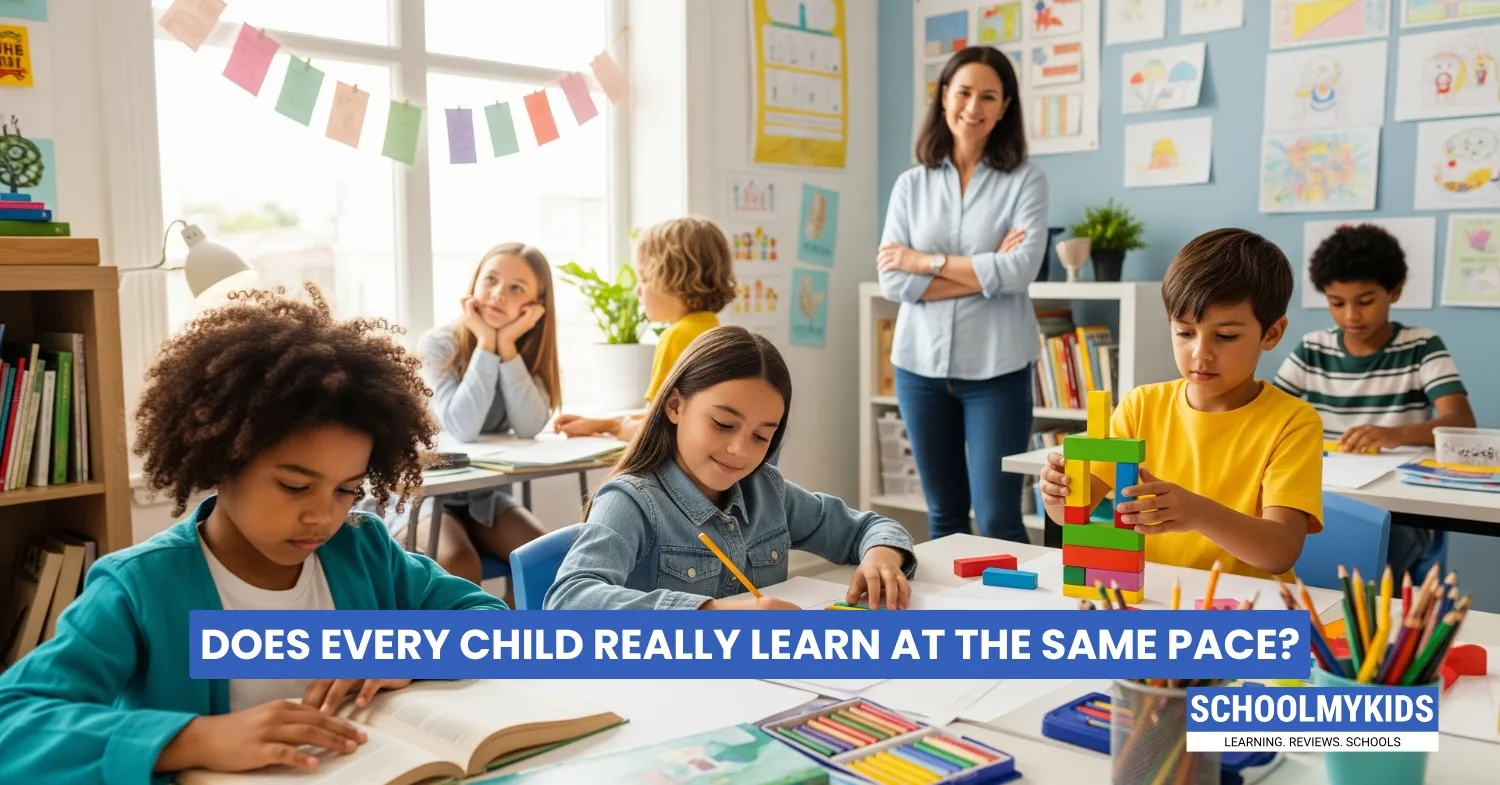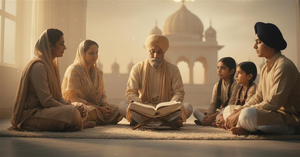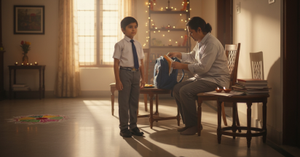If you spend enough time around children, whether your own or in the classroom, you start to see a very interesting pattern. Some children seem to “get it” the very first time. They solve the math sum quickly or grasp a new rule within minutes. And then there are children who need the idea explained again and again, who take longer to organize their thoughts, who might need more practice.
Unfortunately, society has quietly taught us to call one group “bright” or “talented” while labeling the other “slow” or “lazy.” But the truth is far more complex than that.
Do All Children Actually Learn at the Same Pace?
The honest answer is no. Children do not learn at the same pace, whether we are talking about reading, riding a cycle, learning to cook, or even understanding emotions.
Think of it like walking. Some babies walk at 9 months, some take until 15 months, and both are completely normal. Yet, once we place children in school, we suddenly expect them all to “read fluently by age 6” or “master division by age 9.” But who decided these timelines?
Where Did This Idea of a “Standard Pace” Even Come From?
Over the years, schools and society have built an invisible timeline of learning. Curriculum boards, education systems, and even coaching classes set age-based targets:
- By this grade, a child should be here.
- By that grade, they should be there.
And it doesn’t stop at textbooks. Parents compare children in sports, arts, or even in how quickly they can adapt to technology.
But let’s pause and think: Does this “one size fits all” timeline actually serve children? Or does it serve the system that finds it easier to manage children when they move in sync like factory products?
Why Are Parents and Teachers Obsessed with This Set Pace?
It isn’t because parents or teachers are bad or don’t care. In fact, they want the best for the child. But there’s fear. Fear that if the child isn’t keeping up with the “standard,” they will be left behind, judged, or struggle later in life.
Schools, too, are under pressure; results, rankings, and reputation often force teachers to rush ahead, even if some students are not ready yet. The system rewards speed, not depth. And that creates unnecessary anxiety for everyone involved, especially the child.
Why Don’t All Children Learn at the Same Pace?
Children are far too unique to ever be boxed into one pace. A few reasons why their learning journeys differ:
- Different strengths: A child who struggles in math might excel at music, or one slow in sports may shine in drawing.
- Readiness: Sometimes a child is simply not developmentally ready for a concept. With a little more time, the same child can absorb it fully.
- Environment: A child surrounded by stress, constant comparison, or lack of support will naturally take longer to focus and learn.
- Learning styles: Some children need to watch, some need to do hands-on practice, and some need to hear things repeatedly.
Expecting all children to tick the same boxes at the same time is unfair because their lives are not identical.
Should Everyone Learn at the Same Pace?
Not only do children learn at different paces, but they should be allowed to.
When we force children to learn something before they are ready, they don’t just struggle with the subject; they also start believing they are “not good enough.” That damage often lasts much longer than the missed chapter.
Instead of pushing every child to “speed up,” what if we slowed down and adjusted? Isn’t it more important for a child to understand deeply, at their own pace, than to parrot an answer they barely remember tomorrow?
What Can Parents and Teachers Do Differently?
- Stop comparing: Your child isn’t “behind.” They are just on their own timeline.
- Focus on progress, not pace: Notice small improvements instead of chasing big leaps.
- Create supportive spaces: Let children ask questions without fear or shame.
- Celebrate multiple intelligences: Reading, painting, cooking, problem-solving—all of these matter, not just textbook learning.
- Talk about effort, not just results: Effort builds confidence. Speed is meaningless without understanding.
Why This Matters More Than Ever Today
We live in a world where children are overwhelmed not just by schoolwork but also by the expectations of extracurriculars, competitions, technology, and social pressures. Amid this, if they feel they are constantly “late” or “slow,” we risk raising a generation that confuses self-worth with speed.
But imagine the relief a child feels when they realize: It’s okay that I take longer. It doesn’t make me less capable; it just makes me, me.
Isn’t that true education? Not uniformity, but the freedom to grow at one’s own rhythm.
Conclusion
Every child is on their own journey. Some sprint, some walk, some take detours, and some pause to enjoy the view. But at the end of the day, they all get where they are meant to be. Our role as parents and teachers is not to hurry them along but to walk beside them; sometimes guiding, sometimes learning with them, but always respecting their pace.
So the next time you feel tempted to say, “Why are you so slow?” Stop. Ask instead, “How can I support you?” That single shift can change a child’s entire learning experience.









Be the first one to comment on this story.